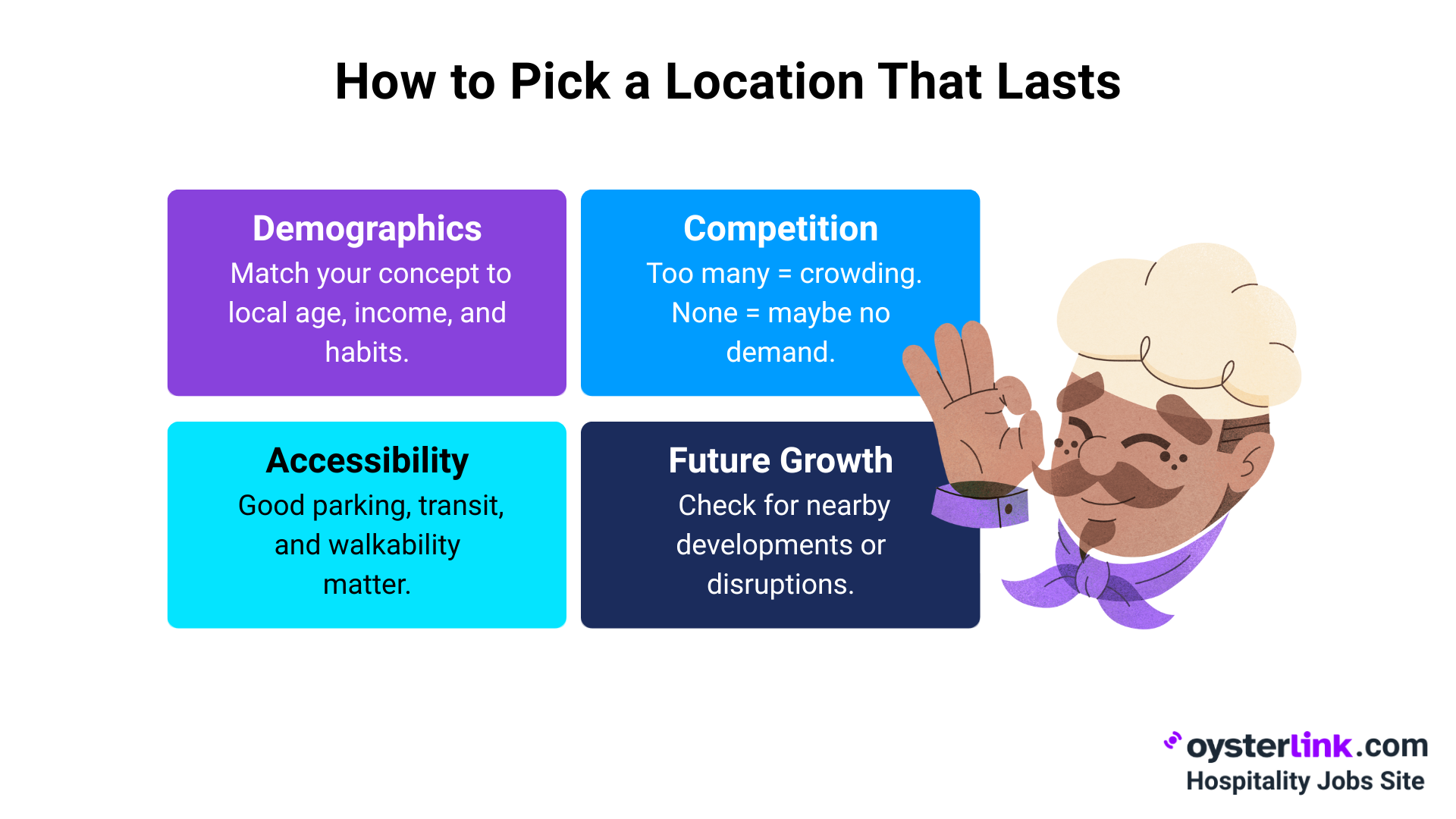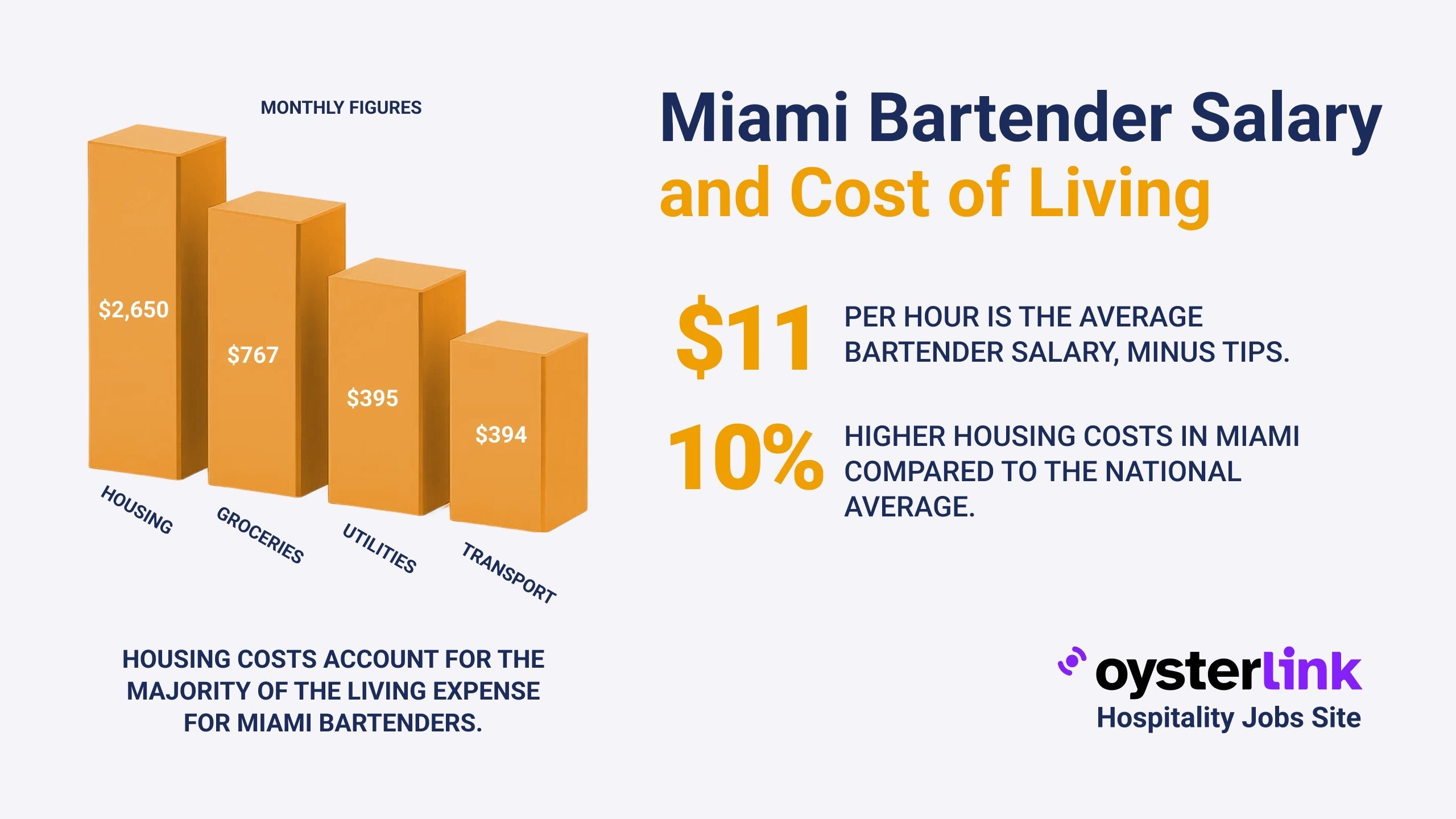Why Location Is Important for Restaurants: 3 Key Takeaways
- High-traffic, accessible areas generate more spontaneous walk-ins and repeat local customers.
- Rent should stay under 8–10% of projected gross sales to balance prime visibility with sustainable costs.
- Zero competition may signal weak demand, while too many nearby restaurants can split the market.
Why location is important for restaurant success cannot be overstated — in this article, we discuss how the right spot drives traffic, revenue, and survival.
Why Location Is Important for Restaurant Survival and Long-Term Success
Location is the bedrock of restaurant survival. Beyond food or service, it dictates regular customer flow, operational costs and brand presence.
A poor spot can doom even great restaurants to early closure.
Foot traffic and customer accessibility
Restaurants in high-traffic areas attract more spontaneous walk-ins and frequent visits from locals.
If you can, spend a few hours at each potential location counting passersby, especially during typical lunch/dinner hours for your concept.
Learn more about hiring top restaurant staff to ensure your team is ready for high-traffic areas.
Visibility and signage
Visibility is vital. If a restaurant is hidden from main roads or tucked inside a quiet plaza, many potential customers will never notice it exists.
Good signage on busy streets or within lively districts can spark spontaneous visits and brand familiarity without costly marketing.
Proximity to target market
Restaurants near their intended audience — like office districts for lunch crowds or suburbs for family dinners — see stronger survival rates.
Test your assumptions: When you tour a space, walk 2–3 blocks in each direction.
- What kinds of people and businesses are nearby?
- Are there schools, theaters or gyms that could help generate repeat business?
Rent and operating costs
Balancing rent with traffic is key. A great location might raise costs but it can reduce breakeven time and provide longer survival chances.
Most experts suggest rent not exceed 8–10% of projected gross sales.
If you're unsure what roles you’ll need to fill to maximize success, this comprehensive restaurant positions list is a great resource.
Evaluating Why Location Is Important for Restaurant Survival
Use the checklists and steps below to assess each potential location through the lens of survival and long-term stability.
Demographic research
Analyze the local population’s age, income and dining habits.
Make sure your concept and price point match what the community actually wants and can afford.
Use online tools like U.S. Census QuickFacts or plug ZIP codes into real estate sites for updated population stats.
Competitor analysis
Check how many similar restaurants are nearby. Too many can divide the market, but zero competition may signal weak demand.
Openings and closures in the area can also reveal location risks or strengths for your concept.
Source: Statista
Accessibility and parking
Customers need stress-free ways to visit regularly. Sufficient parking or nearby transit increases frequency of visits from families or groups.
Assibility also includes ramps, clear entrances and safe nighttime access — minor issues that can impact survival rates.
Future area development
Investigate any upcoming roadwork, new condos or office parks that could boost — or drain — traffic in your area.
- Ask your broker for the latest city planning maps, or check city council websites.
- Sign up for local business association newsletters to get early updates on area changes.

Why Location Is Important for Restaurant Success: Pitfalls to Avoid
Many restaurants close because they overlook key location issues.
Avoiding these frequent mistakes improves your chance to survive the early years.
Treat the list below as a pre-opening checklist — talk through each item with your partner or mentor, not just your agent or “gut feel.”
Source: Locations Cloud
Overestimating draw from destination diners
Unless you offer a totally unique menu or Chef, depend more on walk-ins and local regulars than destination diners.
Tally actual destination spots in your area (e.g., tourist attractions, big events), and be honest about your traffic expectations.
Underestimating seasonal variations
Tourist areas and outdoor venues can see huge drops in traffic during off-seasons. Rent and staff costs don’t pause when crowds do.
Factor seasonality into budgeting and plan ways to attract locals year-round, not just during peak months.
Source: GroundTruth
Ignoring community fit
A restaurant that clashes with neighborhood tastes, hours or cultural norms usually sees low turnout.
So, you want to adapt menu, hours and even decor to align with the local scene for better survival odds.
Ask local residents or neighborhood Facebook groups what they wish existed nearby before settling on a concept.
.png)
Why Location Is Still Important in the Age of Delivery
The strongest restaurants combine online tools with strategic locations for staying power.
If you’re leaning on digital sales, walk your delivery radius — are there enough apartments or offices to support consistent volume?
If you want to make your delivery-first concept succeed, learn strategies to boost restaurant revenue regardless of foot traffic.
Checklist for Owners: Why Location Is Important for Restaurant Survival
Before you commit to a lease, spend a few days — and nights — getting to know the area.
This checklist walks you through what to notice, count, and jot down so you can stack locations side by side and pick the best one:
- Visit locations on weekdays and weekends, both day and night
- Count average foot traffic and vehicle traffic (use a clicker or phone app for accuracy)
- Snap photos of signage visibility from all approaches
- Walk the neighborhood and list nearby amenities (offices, gyms, schools, theaters)
- List all nearby competitors and estimate their busiest times
- Research area median income and population growth using census/real estate tools
- Check Google/Yelp reviews for unmet dining needs or regular complaints
- Test parking and public transit at peak times — note any challenges
- Ask your broker and city websites for planned community developments
- Calculate potential rent as a percentage of projected gross sales (aim for under 10%)
- Keep findings in a spreadsheet with links and photos for side-by-side comparison
.jpg)

.png)

.png)
.png)